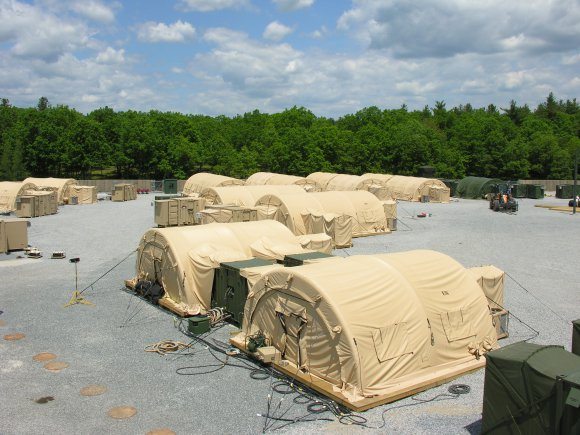Technologies are being developed and tested that enable Soldiers to focus more on mission and less on logistics and resupply, said Katherine Hammack, assistant secretary of the Army for Installations, Energy and Environment.
Hammack was referring to the Base Camp Systems Integration Laboratory, or B-CIL, at Fort Devens, Mass. There, new technologies have been spinning out to Soldiers in Afghanistan and elsewhere since the unit stood up in June 2011.
Hammack, along with Lt. Gen. Raymond V. Mason, deputy chief of staff, Army G-4, and Kevin Fahey, program executive officer, Combat Support and Combat Service Support, toured B-CIL Nov. 5. They later discussed their impressions of the facility, and pointed out the good work B-CIL has been doing.
About 70 to 80 percent of resupply weight in Afghanistan consists of fuel and water, Hammack said. That weight is being reduced through new technologies coming out of B-CIL.
For example, Soldiers are now using an intelligent microgrid computer system that distributes reliable power matched to demand loads and peak demand times at a lower cost per kilowatt hour than the point generation of the traditional grid, she said.
A lot of that energy is renewable, like solar, she said, and when it isn’t being used, it is stored in batteries for later use. This reduces the logistics burden of fuel transport on Soldiers by more than 30 percent.
The shower water reuse system, another B-CIL technology, reduces shower water demand by 75 percent, since the water is recycled.
Another product is the Rigid-Wall Camp, she said, which is replacing traditional tents in theater. It houses 10 to 12 Soldiers, is twice as energy efficient as a traditional tent, can be quickly set up and taken down, and even has ballistic-resistant capabilities. Furthermore, Soldiers say it’s comfortable.
BUDGET UNCERTAINTIES
The return on investment in what B-CIL has been doing is proven, Hammack said. However, continuing resolutions and sequestration have put a damper on research and development.
“We may not be able to test as many new technologies as we’d like to in the future,” she said. “We may have to continue with some of the things we already have out there and we may be unable to explore the art of the possible.”
Mason was more blunt.
“The continuing resolution is caustic. You can’t do any new starts and you’re stuck with the previous fiscal year cash flow. And sequestration is Armageddon. It’s a double-whammy,” he said. “The effects spell uncertainty for the Army and its industrial partners, especially small businesses. You can’t run a business efficiently not knowing what the next year is going to look like.”
Despite the budget woes, Hammack said the Army is partnering with academia, the national labs, industry and the other services to come up with creative and cost-effective solutions and products like those she mentioned to support the warfighter.










